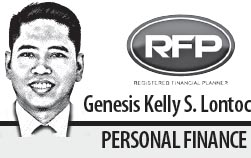Dealing With Debt

In a perfect world, we would have all of the personal resources to support our goals and living standards. However, the reality is that we only have finite resources. One way people cope with this is by getting into debt. Simply put, debt is money owed by one person from another. Debt has a lot of negative connotations. Still, there is good debt and bad debt. Learning to distinguish between good debt and bad debt can help us decide and achieve a better financial future.
Bad debt is debt that is utilized for items that usually lose value immediately, stagnate in value, depreciate over time or promise no possible future financial income. Debt used to finance luxuries related to food and beverages, clothing, gadgets and cars can be classified as bad debt. If a credit card is used to purchase luxuries, then the high interest rate of the credit card can make financial matters much worse. Though credit cards offer convenience and reward use, the costs can greatly outweigh the benefits.
Good debt is debt that is utilized for items that help generate value and income over the long haul. Good debt can be debt that is used to finance ones education in a chosen field. Formal education and professional courses help boost human capital value that can pave the way to a rewarding career. Good debt can be debt that is used to finance well-studied real-estate investments that offer good returns in terms of price appreciation and rental income. Good debt can be debt that is used to finance well-planned business opportunities. Usually, opportunity knocks once so good debt comes in handy in such cases.
Good debt is not perfect debt. Prudence is important in determining the use of good debt. To fully maximize human capital value, the chosen professional field must be in line with the passion of the individual. One must have the commitment to thrive in a career and not just get a job. Real-estate investment decisions must consider both the initial payments and succeeding payments in order to assess whether these payments can be supported by projected sources of income. Business opportunities should address a clear target market and must have a differentiating presence to succeed in the marketplace.
Whether good debt or bad debt is acquired, one has to responsibly manage paying-off the debt. There are two popular ways of managing debt. The first way is called the debt avalanche method. Under this method, all types of debt would be listed along with the corresponding interest rate. The one bearing the highest interest rate gets top priority in terms of payment. For the other types of debt, the minimum payment is done. Once the debt with the highest interest rate gets fully settled, the next priority would be the debt with the second-highest interest rate. This method helps manage interest rates but can be hard to sustain for many, especially if the debt with the highest interest rate is also a high-amount debt.
The second way is called the debt snowball method popularized by Dave Ramsey. Under this method, all types of debt would be listed along with the corresponding amount. The one bearing the lowest amount gets prioritized in terms of payment. For the other types of debt, the minimum payment is done. The idea behind the method is that being able to settle smaller debt first will supposedly give one the confidence to manage bigger debt. Still, higher pending interest rates can make this method costly.
Having clarity in financial goals and living within our means can help us minimize or avoid debt. Clarity in financial goals will help define our priorities in life. Living within our means, especially through a budget, helps differentiate needs from wants. The choice of debt payment to apply can be based on what one can consistently execute. Hopefully, the debt that we get are good debt so that the opportunities we have today leads us to a bright tomorrow.
****
 Gemmy Lontoc is a registered financial planner of RFP Philippines. To learn more about personal financial planning, attend the 68th RFP program this May 2018. To inquire, e-mail info@rfp.ph or text <name><e-mail> <RFP> at 0917-9689774.
Gemmy Lontoc is a registered financial planner of RFP Philippines. To learn more about personal financial planning, attend the 68th RFP program this May 2018. To inquire, e-mail info@rfp.ph or text <name><e-mail> <RFP> at 0917-9689774.
Source: https://businessmirror.com.ph/dealing-with-debt/
2,765 total views, 2 views today












Social